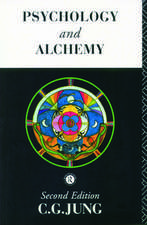Eyeblink Classical Conditioning Volume 2: Animal Models
Editat de Diana S. Woodruff-Pak, Joseph E. Steinmetzen Limba Engleză Paperback – 20 mar 2013
Eyeblink conditioning has been studied from molecular and neural network perspectives, and the paradigm is of demonstrated utility in elucidating mechanisms in physiology and pharmacology. This model system provides a behavioral paradigm in animals that has a close analog in human behavior.
Perspectives of recent developments in human eyeblink classical conditioning research are presented in the companion volume to this book, Eyeblink Classical Conditioning: Applications in Humans.
| Toate formatele și edițiile | Preț | Express |
|---|---|---|
| Paperback (1) | 948.47 lei 6-8 săpt. | |
| Springer Us – 20 mar 2013 | 948.47 lei 6-8 săpt. | |
| Hardback (1) | 954.62 lei 6-8 săpt. | |
| Springer Us – 30 aug 2000 | 954.62 lei 6-8 săpt. |
Preț: 948.47 lei
Preț vechi: 1156.67 lei
-18% Nou
Puncte Express: 1423
Preț estimativ în valută:
181.51€ • 188.80$ • 149.85£
181.51€ • 188.80$ • 149.85£
Carte tipărită la comandă
Livrare economică 14-28 aprilie
Preluare comenzi: 021 569.72.76
Specificații
ISBN-13: 9781475783544
ISBN-10: 147578354X
Pagini: 380
Ilustrații: XI, 364 p. 30 illus.
Dimensiuni: 155 x 235 x 20 mm
Greutate: 0.53 kg
Ediția:Softcover reprint of the original 1st ed. 2002
Editura: Springer Us
Colecția Springer
Locul publicării:New York, NY, United States
ISBN-10: 147578354X
Pagini: 380
Ilustrații: XI, 364 p. 30 illus.
Dimensiuni: 155 x 235 x 20 mm
Greutate: 0.53 kg
Ediția:Softcover reprint of the original 1st ed. 2002
Editura: Springer Us
Colecția Springer
Locul publicării:New York, NY, United States
Public țintă
ResearchDescriere
Classical conditioning of the nictitating membrane (NM) eyeblink response in rabbits is a useful model system for the study of the neurobiology of learning and memory. This paradigm that is so well described on a biological level has also been applied to studies of normal development over the life span and to instances of abnormal developmental phenomena.
Eyeblink conditioning has been studied from molecular and neural network perspectives, and the paradigm is of demonstrated utility in elucidating mechanisms in physiology and pharmacology. This model system provides a behavioral paradigm in animals that has a close analog in human behavior.
Perspectives of recent developments in human eyeblink classical conditioning research are presented in the companion volume to this book, Eyeblink Classical Conditioning: Applications in Humans.
Eyeblink conditioning has been studied from molecular and neural network perspectives, and the paradigm is of demonstrated utility in elucidating mechanisms in physiology and pharmacology. This model system provides a behavioral paradigm in animals that has a close analog in human behavior.
Perspectives of recent developments in human eyeblink classical conditioning research are presented in the companion volume to this book, Eyeblink Classical Conditioning: Applications in Humans.
Cuprins
List of Contributors. Overview and Background. 1. Animal Models in Eyeblink Classical Conditioning; J.E. Steinmetz, D.S.Woodruff-Pak. 2. Discovering the Brain Substrates of Eyeblink Classical Conditioning; R.F. Thompson. Neurobiological Approaches to Investigations of Eyeblink Classical Conditioning. 3. Eyeblink Conditioning Circuitry: Tracing, Lesion, and Reversible Lesion Experiments; D.G. Lavond, M.C. Cartford 4. Electrophysiolgical Recording and Brain Stimulation Studies of Eyeblink Conditioning; J.E. Steinmetz. Perspectives from Eyeblink Conditioning on Life Span Development. 5. Developmental Studies of Eyeblink Conditioning in the Rat; M.E. Stanton, J.H. Freeman, Jr. 6. Alcohol-Induced Damage to the Developing Brain: Functional Approaches Using Classical Eyeblink Conditioning; C.R. Goodlett, et al. 7. Eyeblink Classical Conditioning in Aging Animals; J.T. Green, D.S. Woodruff-Pak. Eyeblink Conditioning From Molecular and Neural Network Perspectives. 8. Cellular Correlates of Eyeblink Classical Conditioning; B.G. Schreurs 9. Relative Contributions of the Cerebellar Cortex and Cerebellar Nucleus to Eyelid Conditioning; W.L. Nores, et al. 10. Neural Network Approaches to Eyeblink Classical Conditioning; M.T. Allen, et al. Eyeblink Conditioning: Physiology, Pharmacology and Related Paradigms. 11. Classical Conditioning of Autonomic and Somatomotor Responses and their Central Nervous System Substrates; D.A. Powell, et al. 12. Motivational Issues in Aversiveand Appetitive Conditioning Paradigms; S.D. Berry, et al. 13. Cellular Alterations in Hippocampus During Acquisition and Consolidation of Hippocampus-Dependent Trace Eyeblink Conditioning; J.F. Disterhof, M.D. McEchron. 14. Cognitive-Enhancing Drugs and Eyeblink Classical Conditioning; D.S. Woodruff-Pak, M. Ewers. Index.
















